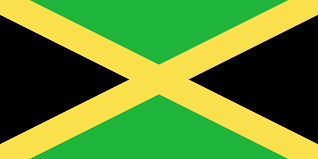Jamaica flag Colors Code hex, png svg
History of the Jamaica Flag
The national flag of Jamaica was adopted on August 6, 1962, the day Jamaica gained independence from the United Kingdom. The flag was designed through a national competition held to create a symbol of the country’s newfound sovereignty. The initial design featured horizontal stripes, but it was later changed to a diagonal cross to avoid similarities with other national flags. The flag’s final design was chosen by a bipartisan committee of the Jamaican House of Representatives.
Design and Colors
The Jamaican flag consists of a diagonal cross (or saltire) that divides the flag into four triangles: two green (top and bottom) and two black (hoist side and fly side). The diagonal cross is yellow.
Meaning of the Colors
- Black: Represents the strength and creativity of the Jamaican people, as well as the challenges they have overcome and continue to face.
- Green: Symbolizes the lush vegetation and agricultural wealth of Jamaica, reflecting hope and the island’s natural beauty.
- Yellow (Gold): Stands for the natural wealth and beauty of the sunlight in Jamaica, as well as the bright future and the creative spirit of the people.
Evolution and Symbolism
Since its adoption, the Jamaican flag has been a powerful symbol of national pride and identity. It represents the country’s resilience, natural beauty, and the enduring spirit of its people. The flag’s unique design and vibrant colors make it one of the most recognizable flags in the world, embodying the rich cultural heritage and the aspirations of Jamaica.
Guess the Flags Quiz
Sharing is caring 🤗

National Symbols 👇
- 🏁 National Flags
- 🦁 National Animals
- 🐦 National Birds
- 🌻 National Flowers
- 🌴 National Trees
- 🥭 National Fruits
- 🍹 National Drinks
- 👴 National Founders
- ☘️ National Emblems
- 🍲 National Dishes
- 🏛️ National Monuments
- ✍️ National Poets
- 🕌 National Mausoleums
- 🎺 National Instruments
- 🦸 National Heroes
- 📆 National Days

